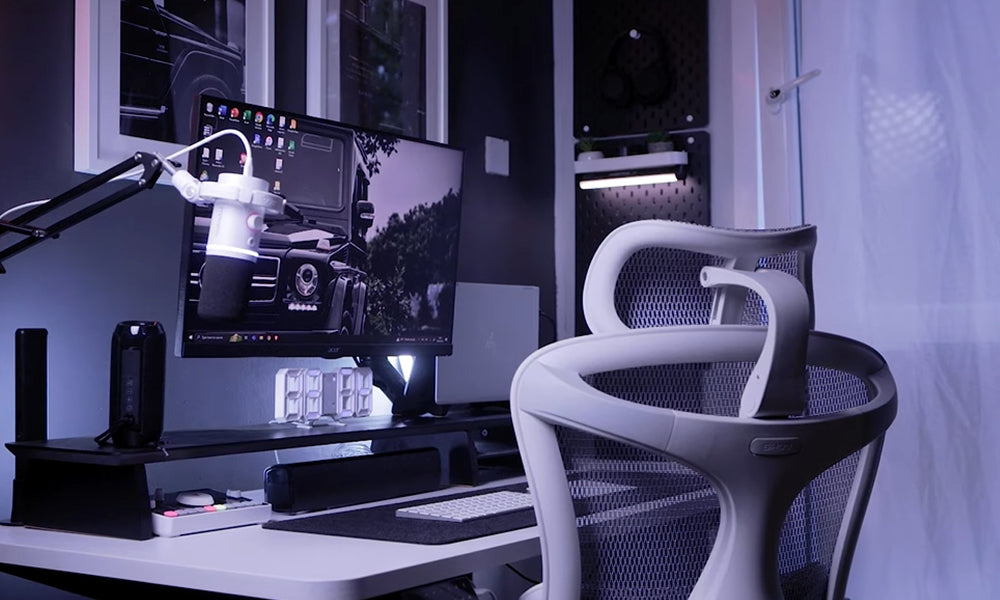Selecting the right office chair is crucial for maintaining good posture and preventing discomfort during long hours of work. While a good chair can boost productivity and well-being, a bad one can lead to a host of health issues and reduced efficiency. Understanding what makes an office chair bad can help you avoid common pitfalls and make an informed decision. Here are several factors that contribute to an office chair being considered bad.
Lack of Ergonomic Design
One of the primary aspects that make an office chair bad is the lack of ergonomic design. Ergonomics refers to the design of furniture and equipment that fits the human body and its movements. An ergonomic chair supports the natural curvature of the spine, promotes good posture, and reduces strain on the body. A chair that lacks ergonomic features, such as adjustable seat height, lumbar support, and armrests, can cause back pain, neck strain, and other musculoskeletal problems.
Insufficient Lumbar Support
Lumbar support is essential for maintaining the natural inward curve of the lower spine. A bad office chair often lacks adequate lumbar support, leading to slouching and poor posture. Over time, this can cause chronic lower back pain and other spinal issues. A good office chair should have adjustable lumbar support to cater to the needs of different users.
Poor Seat Cushioning
The seat cushion plays a vital role in the overall comfort of an office chair. Insufficient cushioning can make the chair uncomfortable, especially during long periods of sitting. A bad chair often has thin or low-quality foam that compresses quickly, leading to discomfort and pressure points. A good office chair should have high-density foam that provides consistent support and comfort.
Non-Adjustable Features
Adjustability is a key factor in determining the quality of an office chair. A bad chair often has limited or no adjustable features, making it difficult to customize the chair to fit the user’s body. Important adjustable features include seat height, armrests, backrest angle, and seat depth. These adjustments allow users to tailor the chair to their specific needs, promoting better posture and comfort.
Inadequate Seat Depth
Seat depth refers to the distance from the front edge of the seat to the backrest. A bad office chair often has a seat that is either too shallow or too deep. A shallow seat does not provide adequate thigh support, while a deep seat can cause the user to sit too far back, leading to slouching and poor posture. Ideally, a chair should have an adjustable seat depth to accommodate users of different heights and leg lengths.
Poor Build Quality
The build quality of an office chair is another critical factor. A bad chair is often made from cheap materials and has a flimsy construction. This can lead to a lack of stability, squeaking noises, and a shorter lifespan. A high-quality office chair should be made from durable materials, have a solid construction, and come with a warranty that guarantees its longevity.
Inadequate Backrest Support
The backrest of an office chair should support the entire back, from the lower spine to the shoulders. A bad office chair often has a backrest that is too low, too narrow, or lacks adequate padding. This can lead to discomfort and poor posture, as the user is not properly supported. A good backrest should be adjustable in height and angle and provide sufficient padding to support the back comfortably.
Fixed or Poorly Designed Armrests
Armrests are an important part of an office chair, as they support the arms and shoulders, reducing strain on these areas. Bad office chairs often have fixed or poorly designed armrests that are either too high, too low, or too narrow. This can cause discomfort and force the user to adopt awkward postures. Adjustable armrests that can be moved up and down, as well as inward and outward, are ideal for providing proper support.
Lack of Mobility
Mobility is an important factor in an office chair, especially in a dynamic work environment. A bad office chair often lacks smooth-rolling casters or a swivel function, making it difficult to move around the workspace. This can lead to strain as the user has to exert more effort to reach different areas of their desk. A good office chair should have high-quality casters and a smooth swivel mechanism to allow easy movement.
Absence of Breathable Materials
The materials used in the construction of an office chair also play a significant role in its comfort level. Bad office chairs often use non-breathable materials that trap heat and moisture, leading to discomfort, especially in warm environments. Breathable mesh or fabric materials are ideal for promoting airflow and keeping the user cool and comfortable during long periods of sitting.
Conclusion
Choosing the right office chair is essential for maintaining good posture, comfort, and overall well-being. A bad office chair lacks ergonomic design, sufficient lumbar support, proper cushioning, adjustability, and build quality. It also fails to provide adequate backrest and armrest support, mobility, and breathable materials. By being aware of these factors, you can avoid bad office chairs and invest in a high-quality, ergonomic chair that will support your health and productivity in the long run. Remember, a good office chair is an investment in your well-being and work efficiency.



